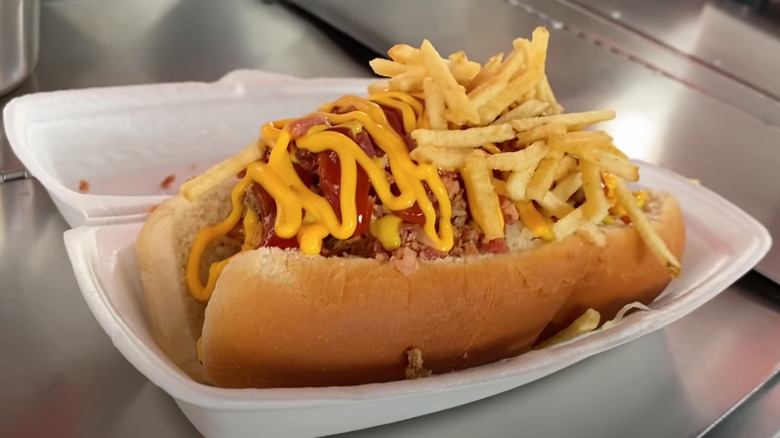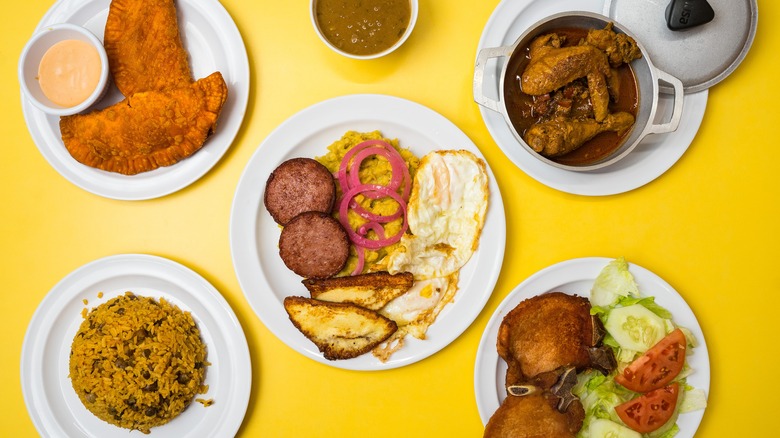The Nostalgic Snack That Sets Puerto Rican Hot Dogs A Step Above The Rest
There are many different regional hot dog styles that can spark strong opinions, and even individual toppings have their share of loyalists and detractors. Some prefer just a squirt of mustard or a tuft of sauerkraut, while others — like fans of the Sonoran or Chicago-style dog — definitely take a "more is more" approach. Puerto Rican hot dogs certainly adhere to the latter philosophy.
Also called a Boricua-style hot dog, a Puerto Rican dog relies on store-bought ingredients with some homemade touches. Yellow mustard and ketchup are common players, though some use mayo ketchup instead (a mixture of mayonnaise and ketchup, often with some fresh garlic too). Yellow processed cheese goes on next. It may be of the thinner nacho cheese sauce variety, or the thicker stuff that squeezes out of a metal can. Next, jarred sauerkraut — known as repollo agrio in the country — adds tang.
The dog is finished with seasoned ground beef called carne molida, plus onions cooked with ketchup, tomato paste, or tomato sauce, a pinch of dried oregano, and a splash of water. The crowning touch, though, is crunchy shoestring potato chips. The result has a chili dog vibe with a flavor profile all its own. The dish leans sweet and rich, but has enough acidic brightness for balance. The shower of nostalgic potato snacks lends a delectable crunch for a surprising yet perfect finish. Boricua dogs are mainstays at roadside carts and stands across the island, and have also received attention from foodies worldwide.
Puerto Rican hot dogs can tell you about the local cuisine
Puerto Rico — known as Boriquén by the indigenous Taino people — has a food culture that uses native ingredients as well as one brought there during Spanish colonization. It also borrows techniques used by enslaved African people, and various influences from later colonization by the United States.
After the U.S. took control of the island as a non-autonomous territory in 1898, it began supplying the region with canned goods and preserved meats, while reaping the riches of Puerto Rico's agricultural economy. America sent these shelf-stable products to feed the colony — as they could withstand harsh weather and storms — without much consideration for the health of the island's inhabitants. The hot dogs, condiments, and crispy potato sticks on Boricua dogs are reflective of these sorts of goods from the U.S.
These hot dogs also carry the flavors that Puerto Rican cuisine is known for. The carne molida is flavored with foundational Puerto Rican spice blends like adobo and sazón, as well as sofrito — a vegetable mix that traditionally includes indigenous culantro and ají dulce peppers, along with garlic and onions. These hot dogs may seem like an anomaly when compared to the rice, beans, plantains, stewed meats, tubers, and tropical fruits that dominate the cuisine of Puerto Rico. However, when you scratch the surface, you can see that even a simple frank is a reflection of the history of the island.


